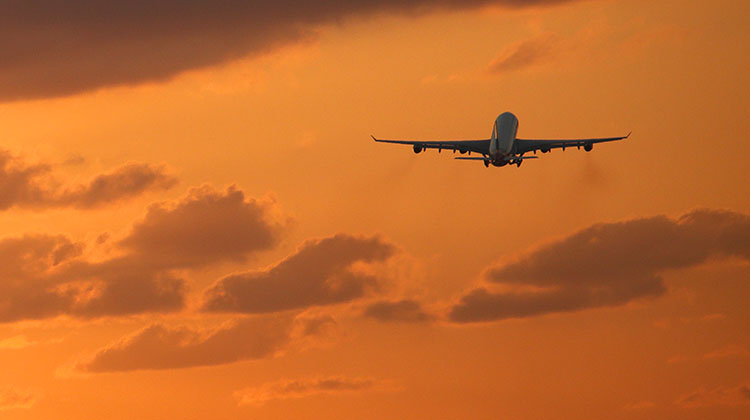
The International Air Transport Association (IATA) expects airlines around the world to post a collective net profit of US$35.5 billion in calendar 2019 in what would be the industry’s 10th consecutive year in the black.
The forecast, outlined at the IATA global media day briefings in Geneva on Wednesday (European time), represented an improvement on a likely profit of US$32.3 billion for the current year.
IATA director general and chief executive Alexandre de Juniac says there is cautious optimism across the aviation industry.
“With a four per cent net margin, the first point to emphasise is that this is basically a similar performance to 2018,” de Juniac told reporters at the IATA global media day.
“Given the gloom in the markets, this may be a surprise to some. But demand is strong and we have seen a major drop in oil prices.
“The aviation industry is on a more solid financial footing than at any time in its history.”
International Air Transport Association (IATA) says airlines are expected to collectively post a net profit of US$35.5 billion in 2019, up from a projected net profit of US$32.3 billion in 2018. The forecasts were released at the #IATAMediaDay being held in Geneva pic.twitter.com/r24wqJ1cZO
— World of Aviation (@the_wofa) December 12, 2018
Global oil prices have had a volatile 2018
The 2019 industry outlook was based on an anticipated average Brent Crude Oil price of US$65 per barrel, lower than the US$73 a barrel in the current year.
In October, Brent Crude Oil reached four-year highs of close to US$86 per barrel as tensions in the Middle East and the United States imposition of sanctions on Iran sent jitters through commodities markets.
Since then however, crude has been on a steady retreat to its lowest level in more than 12 months at about US$62 a barrel as fears of reduced supply from the Iran sanctions proved overblown.
At December 7, the IATA jet fuel price monitor was up about 2.2 per cent from a year ago.
IATA chief economist Brian Pearce said the full impact of the decline in oil prices was not likely to be fully felt in 2019, given the hedging policies many airlines.
“That will delay the benefits of the fall in fuel prices that we are seeing here,” Pearce told reporters at the global media day.
While lower fuel prices were a plus for the bottom line, labor shortages in the aviation sector was putting upwards pressure on wages as the economic expansion in the Organisation for Economic Cooperation and Development (OECD) countries used up all the spare capacity in the economy.
IATA estimated labour costs – which represented an airline’s largest cost behind fuel prices – would increase 2.1 per cent in 2019 after a “long period of stability”.
Geopolitical issues would also cast a shadow over the aviation sector.
“I do think there is a lot to worry about,” Pearce said. “Trade and protectionism I think is a major concern for the industry.”
“We as an industry depend on open borders, we depend on borders with very little friction and we’re seeing a lot of worrying developments, the latest of which of course are the tariff wars.”
The ongoing uncertainty over the eventual outcome of the negotiations over the United Kingdom’s withdrawal from the European Union – Brexit – has also been damaging to aviation.
“Brexit, if it happens, in whatever form it takes, will impose trade costs, will impose costs at the border,” Pearce said.
However, Brexit was likely to only slow and not stop growth in the United Kingdom economy.

Asia Pacific airlines expected to reach US$10 billion profits
Five of the six regions were expected to be in profit in 2019, with Africa the only part of the world where airlines were tipped to be in the red.
Asia Pacific carriers were forecast generate US$10.4 billion in net profit in 2019 – on net margins of 3.8 per cent – up from a likely US9.6 billion in 2018.
Demand measured by revenue passenger kilometres (RPK) was tipped to grow 7.5 per cent (versus 8.5 per cent in 2018), while capacity measured by available seat kilometres would rise 7.1 per cent (versus 7.6 per cent in 2018).
However, IATA cautioned that the experience of airlines in the Asia Pacific was far from uniform.
“This is a region of diverse markets, some of which are seeing strong growth from new LCC entrants while others are very dependent on outbound cargo from key manufacturing centres,” IATA said.
“Cargo revenue growth has slowed from the strong performance of 2017 but remains positive for airlines in the region.
“Lower fuel costs, low levels of fuel hedging and strong regional economic growth are supporting profitability in 2019 in this region.”
North American carriers were forecast to have the biggest profit at US$16.6 billion, up 13 per cent rom US14.7 billion in the current year.
The overall US$35.5 billion net profit represented a profit of US$7.75 per passenger, or a net profit margin of four per cent.
While airlines were on track to record a 10th consecutive year of profitability in 2019, de Juniac said the buffer between profit and loss was thin.
“A dollar for a new tax, an increase in charges or shift in the oil price can eat away at the $7.75 per passenger profit very quickly,” de Juniac said.
“We are in a different league from Apple, for example, which makes $400 for every iPhone XS sold. Governments should not view the industry’s better financial footing as a blanket bill of health. Nor a blank check.”
“To keep delivering the economic and social benefits that only aviation can, it needs a business-friendly policy framework that supports competitiveness.”
JUST IN: 2019 is projected to be the 10th consecutive year of positive profitability for the airline industry. #IATAMediaDay #aviation #avgeek Read: https://t.co/nY7ph47wLU pic.twitter.com/nwRagL93Zh
— IATA (@IATA) December 12, 2018










